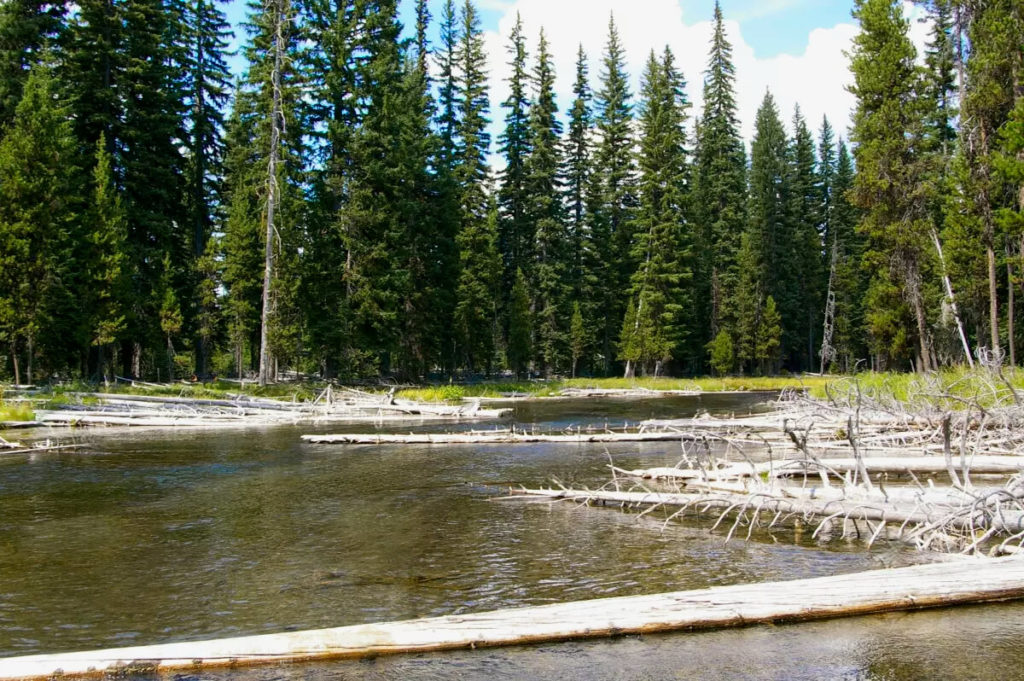By John DeVoe | June 15, 2015 | Instream
For many Oregonians, drought once existed as an abstraction, something that happened elsewhere, far away. No longer. This summer, Oregon’s rivers are suffering some of the lowest streamflows and highest water temperatures in our recorded history.
These conditions are triggering tragic kills of salmon, steelhead, trout, and sturgeon in the Columbia, Deschutes, John Day, Clackamas, North Umpqua, and Willamette basins. A stunning quarter-million returning Columbia River sockeye have already perished, and biologists estimate some 80 percent of the half-million strong run could eventually succumb.
Decades-old sturgeon are dying in the Columbia’s John Day Pool. Threatened wild spring chinook are dying on the lower Clackamas — even as Oregon officials downplay the importance of the lower river for imperiled fish while green-lighting large new water entitlements to Lake Oswego and neighboring cities.
Are we glimpsing the future for our rivers? It’s possible, but there is hope for something better.
Expected climate change impacts include less snowpack, earlier runoff, and longer periods of low streamflows. Combined with higher air temperatures, these conditions can to lead to lethal water temperatures for salmon and steelhead. We’re seeing all of those impacts now.
But drought — whether in Oregon or elsewhere in the West — is not simply a function of nature delivering abnormally less water, or precipitation falling as rain rather than snow, or storms coming at the wrong time. In a recent series of insightful reports, ProPublica has examined how “the West’s water crisis is as much a product of human error and hubris as it is of nature.” This statement encapsulates much of what has driven WaterWatch’s advocacy for water management reform over the last three decades.
Our rivers’ problems didn’t begin with the lack of snowfall last winter or high air temperatures this summer. Even in a normal water years in Oregon, every basin in the state suffers from water shortages due to choices made by people. For over a century, Oregon and other western states have encouraged people to drain water from our rivers, streams, and aquifers under a system of water laws largely designed for the needs of a different time. This outdated system exacerbates the current problems we face and includes some fundamental glitches that must be addressed.
What are some solutions?
First, ecosystems, fish, and the water needs of rivers and streams must be recognized, quantified, and protected. There has been some progress and recognition of these needs, but Oregon law still allows water users to completely dry up a stream. In large parts of the west, streamflow is not recognized as a legal use of water. The environment must obtain a legally enforceable share of water to keep our rivers flowing as competition for limited water resources becomes more intense.
Second, Oregon must do a better job of measuring water use — from both above and below-ground sources — to allow meaningful management of water. Unfortunately, we often lack the necessary data to make science-based, sustainable water management decisions about our surface flows or groundwater. This is intentional ignorance, maintained because it benefits powerful water interests. As a result, more than half the water diverted in Oregon is not measured. Even when water rights require measurement, compliance is spotty and agency capacity to acquire and process measurement and other data is always on the budget chopping block.
Third, we must incentivize conservation and efficiency. Water is free. And because water is free, sustainable water management is chronically underfunded. A price signal associated with the water itself would incentivize conservation and efficiency while also funding critical management needs. Again, those who benefit from the current system have worked to maintain the unsustainable status quo, but this must change.
Of course, humanity’s ever-expanding greenhouse gas emissions are exacerbating the harm caused by Oregon’s antiquated system of water allocation and management. We must reduce emissions to have any hope of saving our rivers, and our way of life.
Nature is dealing Oregon some tough cards at the moment. But we can have significant influence over this situation — if we choose. It’s time to recognize that the ongoing water crisis — or drought — results as much from our failure to sustainably allocate and manage water as it does from climate. While we can’t promise a healthy snowpack this winter, we can promise that WaterWatch is working overtime to address Oregon’s water crisis. Please join us to ensure that rivers, aquatic species, and sound water policies are well represented.
Banner photo of the Upper Deschutes River by Bridget Moran, U.S. Fish and Wildlife Service.

